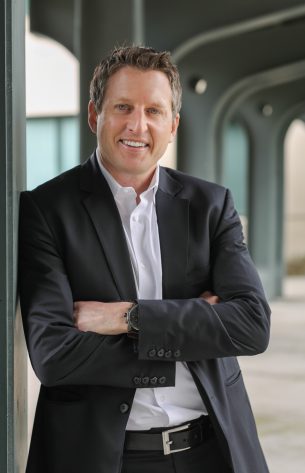How should you monitor, service, update and finally decommission the army of IoT devices you deploy?

Keith Shea of Wind River
Step One is relatively easy; you agree to reap the benefits an Industrial Internet of Things (IIoT) deployment. Step Two is harder; how do you deploy and manage a fog, cloud or hybrid compute approach?
How do you support the thousands of sensors and actuators that need to be installed? And how do you plan their lifecycle? Editorial director, Jeremy Cowan asks a man who must know; Keith Shea, general manager, Helix IoT Solutions at Wind River.
IoT Global Network: Do IoT device owners and operators currently struggle to manage the devices they deploy, for example in usage monitoring, or management?
Keith Shea: Companies have been monitoring devices for decades. However, use cases, expectations, technology, etc. have evolved tremendously over this same period, presenting a new set of challenges. The shift from monitoring to lifecycle management of a device requires a new approach. It is further complicated with the diversity in the types of devices as well as the forecasted volume of connected devices. Managing this complexity is often overwhelming for device owners and operators.
IoT Global Network: In your experience, what percentage of operators plan the lifecycle of their devices from the moment they are first deployed through to de-commissioning?
KS: Operators are quickly understanding the value of lifecycle management, and the need to plan accordingly. In the early stages of a project, there is a tendency for operators to focus on the need for collecting data. However, as we walk through the various use cases and workflows, the need for robust lifecycle management begins to surface.
IoT Global Network: What’s the reason for the new Wind River® Helix™ Device Cloud platform? How does it differ from the last version?
KS: We continue to invest in our platform in order to meet the evolving needs of our customers. The next release of Wind River® Helix™ Device Cloud will include a broad set of new features and capabilities, including:
- Enhanced Security: “Zero-Touch” device onboarding and configuration for instantly-connected, manageable, hardened devices leveraging Intel technology
- Enhanced Device Management Capabilities: Remote monitoring, over-the-air/firmware over-the-air updates, alerts, rules, support for campaigns, data management, and device monitoring
- Flexible Deployment Options: Support for private and hybrid cloud deployments, as well as expanding regional public cloud hosting options
- Broad Operating Support/Flexibility: With the Device Cloud Python Agent customers can decide which OS works best for their business
- Expanded set of APIs to simplify contextualising device data and device applications with business processes and business systems
Utilising the latest version of Device Cloud, you can ensure that the devices you depend on for crucial business data are secure, responsive, and performing at the highest possible level.
IoT Global Network: How can Helix Device Cloud help solution providers cut costs?
KS: Device Cloud can help solution providers cut costs at multiple points of the device’s lifecycle. Investing the significant resources in developing, and sustaining, all the robust functionality required for proper lifecycle management would be inefficient, or unrealistic, for solution providers. Leveraging Device Cloud would accelerate their time to market, reduce their development costs, and mitigate risk in execution.
During operation, Device Cloud enables easy onboarding and servicing of the device. This minimises costs during initial deployment and prevents unnecessary ‘truck rolls’ to diagnose or update a device. Solution providers using Device Cloud are able to service their customers more efficiently, keeping devices more secure and available than otherwise possible.
IoT Global Network: Security consultants often say that security can’t just be bolted on to existing device platforms and networks. Yet that seems to be what many legacy networks need, as they were planned to be stand-alone networks with no internet connectivity and more is now being demanded of them. Is the choice for device operators to either
secure whatever they can or rip-and-replace?
KS: We agree, security is not a bolt-on after-thought solution. Security must be considered holistically from the cradle to the grave. However, in the absence of a universal solution, there has to be a practical approach in dealing with legacy devices because rip-and-replace is not an economically viable option in many industries. Ultimately, we work with operators to assess their risks, understand their business environment, and architect their solution accordingly.
In a software-defined world, security starts with the devices. Devices are the point where decisions are being made locally. If someone can gain access to the device, that is the best place to start causing trouble. While most operators have more confidence with physical barriers, there are many examples where on-site personnel maliciously or accidentally caused major disruption.
For this reason, if a device cannot be updated, the device is not secure. New security threats that will need to be addressed typically through security update patches. Thus, the ability to apply software updates to the device will be required in order to stay on top of these new threats.

IoT Global Network: Is more data being gathered and analysed at the network edge? How does Wind River Helix Device Cloud assist this process?
KS: Yes, more data is being gathered and analysed at the network edge. As the performance of the sensors and devices have increased, so has the amount of data collected from the sensors. IoT operators are quickly finding out that it is not practical to send 100% of the data to the cloud, and there are a variety of ways to optimise the amount of data that makes that trip.
A simple approach is to only send sensor data when it changes or exceeds a configured threshold. A more robust approach is to push more compute to the edge and perform analytics on gateway devices and only send the resulting critical and meta-data.
Wind River Helix Device Cloud enables the entire process across the spectrum in several ways. First, Device Cloud and serves as the edge egress to help get the data off the edge. Second, Device Cloud offers tools to allow IoT operators to create the before mentioned simple logic such as send on change or send on exceeding a threshold.
Lastly, Device Cloud is working with analytics partners who deploy analytics solutions to the edge where Device Cloud is used to configure and update the analytics engine and models used to process data at the edge.
IoT Global Network: New business models seem to be emerging in IoT. You talk about selling Optimisation-as-a-Service; can you give examples of this and other new models?
KS: We have seen various business models across our customer base. Some customers are trying to shift from selling their equipment to a pay-per-use model (for example, from selling a welder to selling pay-by-the-weld). Others are trying revenue share models based on performance – from selling industrial robots to guaranteeing throughput, or from selling industrial lighting to sharing energy cost savings.
While these new business models have the potential of being disruptive to mature industries, they often require adoption along multiple points of a supply chain.
Keith Shea general manager, Helix IoT Solutions at Intel’s Wind River was talking to IoT Now’s Jeremy Cowan (pictured right).
Comment on this article below or via Twitter @IoTGN

